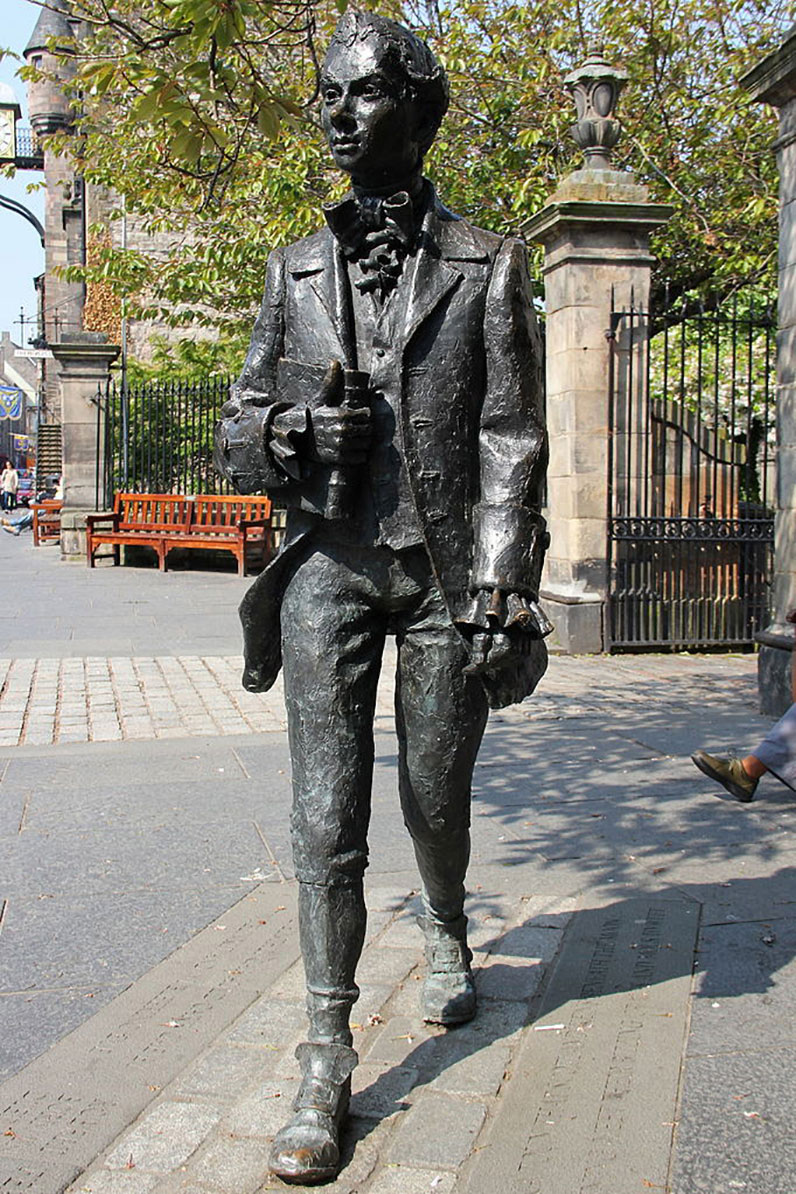Key People
Robert Fergusson (1750-1774)
Robert Fergusson was born in Edinburgh and is best known for his poetry, which inspired Robert Burns. He was enrolled at St Andrews Univerity. Historical researchers have noted that he was perhaps the first significant poet to study English literary texts at a university.
In 1769, Fergusson returned to Edinburgh to work as a clerk. He interacted with Edinburgh singers, musicians and actors, and enjoyed the local theatre life. During this time he had poems published in Edinburgh magazines.
Volumes of poems published
Fergusson wrote in both Scots and English and in 1773 published a volume of his collected poems. The Edinburgh publisher Ruddiman brought out further collections of Fergusson’s poems after his death.
Fergusson was a member of the Cape Club, a sociable club in Edinburgh. In late 1773 he fell ill and had to give up work. The Cape Club set up a collection to support him during his illness, but Fergusson died in 1774, and was buried in an unmarked grave.
Robert Burns’s favourite poet
Fergusson was Robert Burns’s favourite Scottish poet, and some years after Fergusson’s death, Burns paid for a headstone for Fergusson’s grave in Calton Hill cemetery, and composed a memorial inscription for it.
Image: ‘Robert Fergusson, 1750-1774. Poet’, by Alexander Runciman, about 1772. By courtesy of the Scottish National Portrait Gallery.
